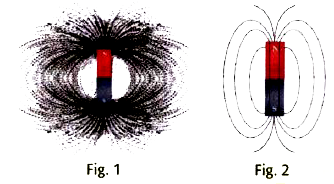A passenger in a car moving round a curved road is thrown towards the outside of the curve. What force throws him in this direction ?
The correct Answer is:Centrifugal force
To solve the question, we need to analyze the situation of a passenger in a car moving around a curved road and understand the forces at play.
1. Understanding Circular Motion: When a car moves along a curved path, it is undergoing circular motion. The car needs to exert a force towards the center of the curve to keep moving in that circular path.
2. Centripetal Force: The force that keeps the car (and the passenger) moving in a circular path is called the centripetal force. This force acts towards the center of the circular path.
3. Inertia of the Passenger: According to Newton's first law of motion, an object in motion will remain in motion unless acted upon by an external force. The passenger, due to inertia, tends to continue in a straight line. When the car turns, the passenger feels as if they are being thrown outward.
4. Centrifugal Effect: From the passenger's frame of reference (inside the car), it appears that there is a force pushing them outward. This is often referred to as centrifugal force. However, it is not a real force acting on the passenger; rather, it is the effect of inertia.
5. Conclusion: The passenger feels as if they are being thrown outward due to their inertia, which causes them to resist the change in direction. The actual force acting on the passenger is the centripetal force exerted by the car, which keeps them in circular motion.
Final Answer:
The force that appears to throw the passenger towards the outside of the curve is the effect of inertia, often referred to as centrifugal force in a non-inertial reference frame. The real force acting on the passenger is the centripetal force directed towards the center of the curve.
---
The force that appears to throw the passenger towards the outside of the curve is the effect of inertia, often referred to as centrifugal force in a non-inertial reference frame. The real force acting on the passenger is the centripetal force directed towards the center of the curve.
Topper's Solved these Questions
- CIRCULAR MOTION Book:ICSEChapter:CIRCULAR MOTION Exercise:MODULE 1 (VERY SHORT ANSWER QUESTIONS)
Explore 7 Videos
- CIRCULAR MOTION Book:ICSEChapter:CIRCULAR MOTION Exercise:MODULE 1 (FROM ANGULAR VELOCITY)
Explore 4 Videos
- CIRCULAR MOTION Book:ICSEChapter:CIRCULAR MOTION Exercise:MODULE 1 (LONG ANSWER QUESTIONS)
Explore 8 Videos
- COMPETITION CARE UNITBook:ICSEChapter:COMPETITION CARE UNITExercise:OBJECTIVE QUESTIONS FROM PREVIOUS IAS EXAMINATIONS
Explore 50 Videos
Similar Questions
Knowledge Check
A car moving on a horizontal road may be thrown out of the road in taking a turn
Aby the gravitational forceBdue to the lack of proper centripetal forceCdue to the rolling frictional force between the tyre and roadDdue to the reaction of the ground
A bus and a car move round a circular road with the same angular velocity. The car is closer to the centre of the curved road. Which has greater linear speed ?
View Solution(A) : A maximum possible speed of a car on banked curved road is greater than that on a flat curved road
(R) : On a banked curved road horizontal component of normal reaction by road along with friction provides necessary centripetal force
View SolutionA car is travelling at a velocity 10 km h−1 on a straight road. The driver of the car throws a parcel with a velocity 10√2kmh−1 with respect to the car, when the car is passing by a man standing on the side of the road. If the parcel is to reach the man, the direction of throw makes the following angle with the direction of motion of the car
View SolutionFing the maximum speed with which an automobile can round a curve of radius 8 m without slipping of the road is unbanked and he coefficient of friction between the orad an the tyres is 0.8(g=10m/2)
View SolutionA body of mass m is moving in a circle of radius r with a constant speed v, The force on the body is mv2r and is directed towards the centre what is the work done by the from in moving the body over half the circumference of the circle?
View SolutionFind the maximum speed at which a car can take turn round a curve of 30 cm radius on a level road if the coefficient of friction between the tyres and the road is 0.4. Take g=10ms−2.
View SolutionA car is driven round a curved path of radius 18 m without the danger of skidding. The coefficient of friction between the tyres of the car and the surface of the curved path is 0.2. What is the maximum speed in kmph of the car for safe driving ? [g = 10ms−1]
View Solution
